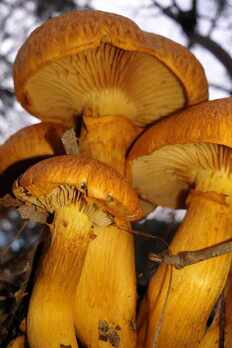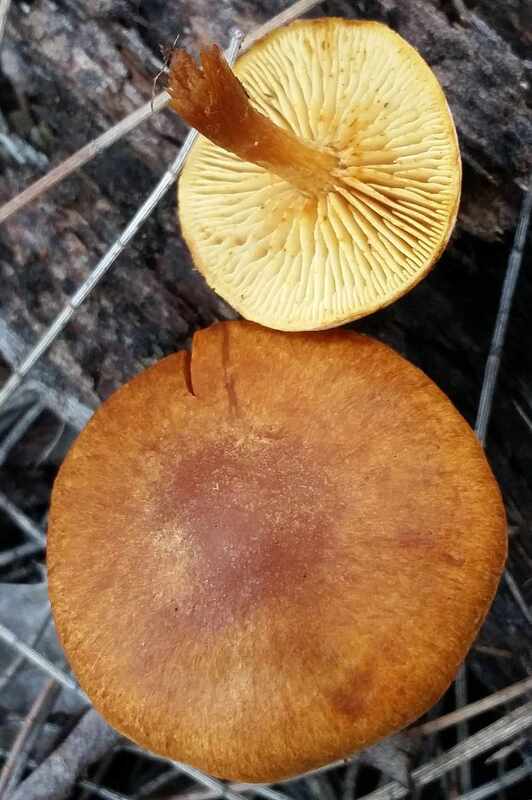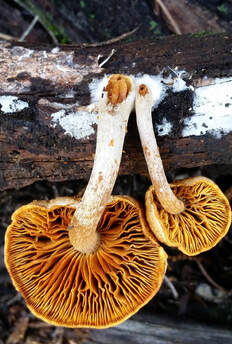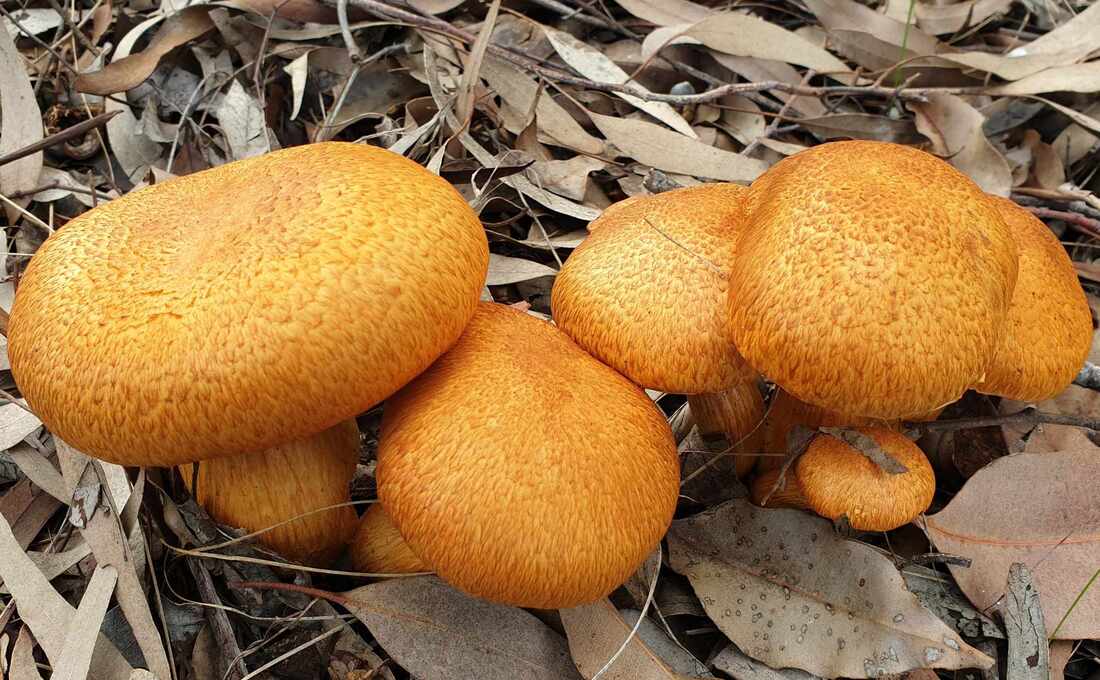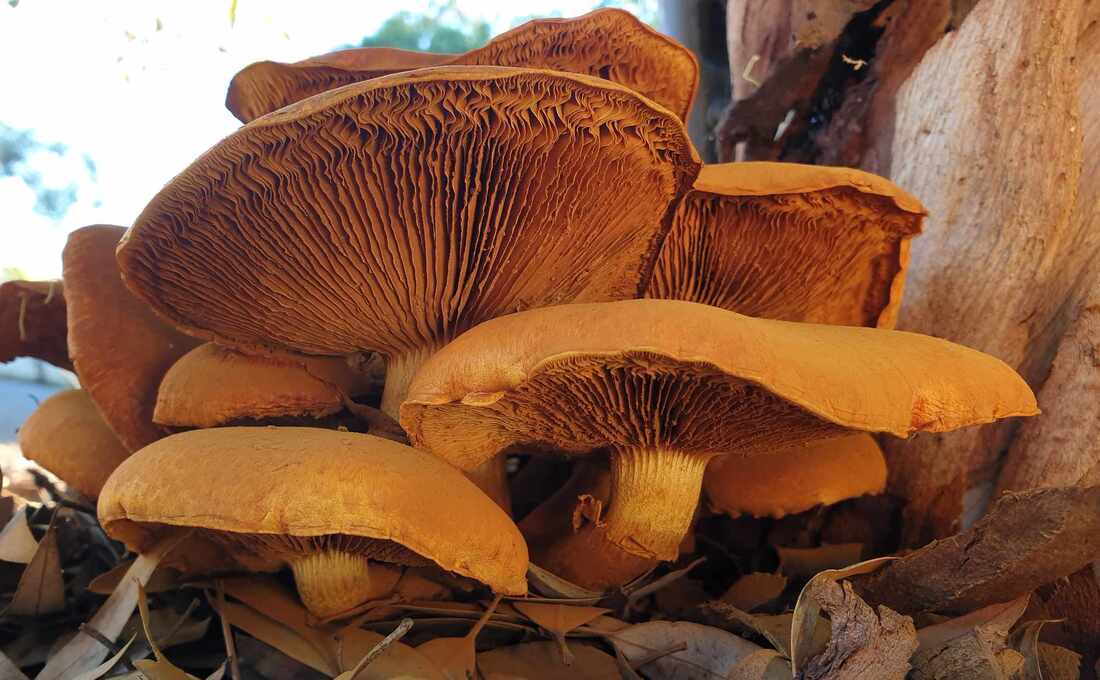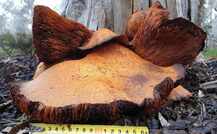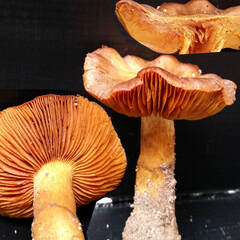
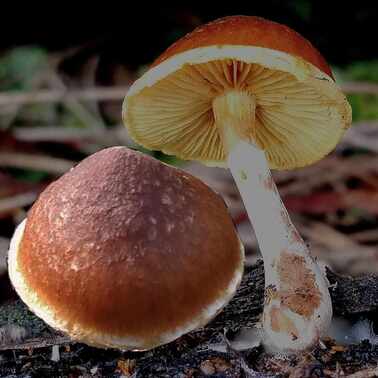 Gymnopilus allanopus
Gymnopilus allanopus
Each winter, small orange-brown Gymnopilus mushrooms emerge on and around dead wood at Narrogin, particularly in rock sheoak woodland.
The fruit body is typically reddish-brown to rusty orange to yellow, medium to large. The veil (ring of tissue around the stem below the cap) varies. It is often not obvious on older specimens, but can be well developed. They produce large amounts of ochre-brown spores that can coat the veil, stem and ground underneath. Most members of Gymnopilus grow on wood but at times may appear to be soil fungi if the wood is buried.
The name means naked pileus, which I assume refers to the relatively regular, smooth and dry cap.
Gymnopilus is not edible.
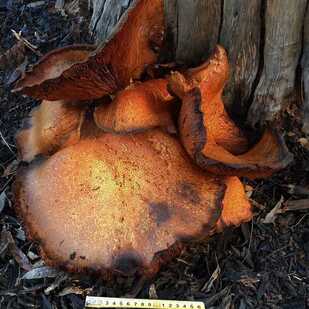
1. The youngest find had two groups around and about a metre away from a Eucalyptus caesia mallee (that was probably planted on or near an old tree base). They resembled large orange "button mushrooms" that live in the soil.
2. The second find was a more advanced group that had emerged at the base of a mallee street tree. Initially it was misidentified as the aggressive pathogen Armillaria luteobubalina (Australian Honey Fungus), which is very similar, but has white spores. The image below shows a coating of brown spores on cap and stems. Gymnopilus .junosius can be a weak pathogen, but the mallee may have also been planted near a long dead and disappeared tree.
3. The third find at the base of a dead wandoo was past its prime. The darkened fully expanded caps overlapped each other so much that they resembled oyster mushrooms.
| Members of Pholiota and Cortinarius are easy to confuse with Gymnopilus. Pholiota can be distinguished by its sticky cap and duller (brown to cinnamon brown) spores. Cortinarius grows on the ground as scattered mushrooms. Beginners can confuse Gymnopilus with Galerina, which contains deadly poisonous species. |
